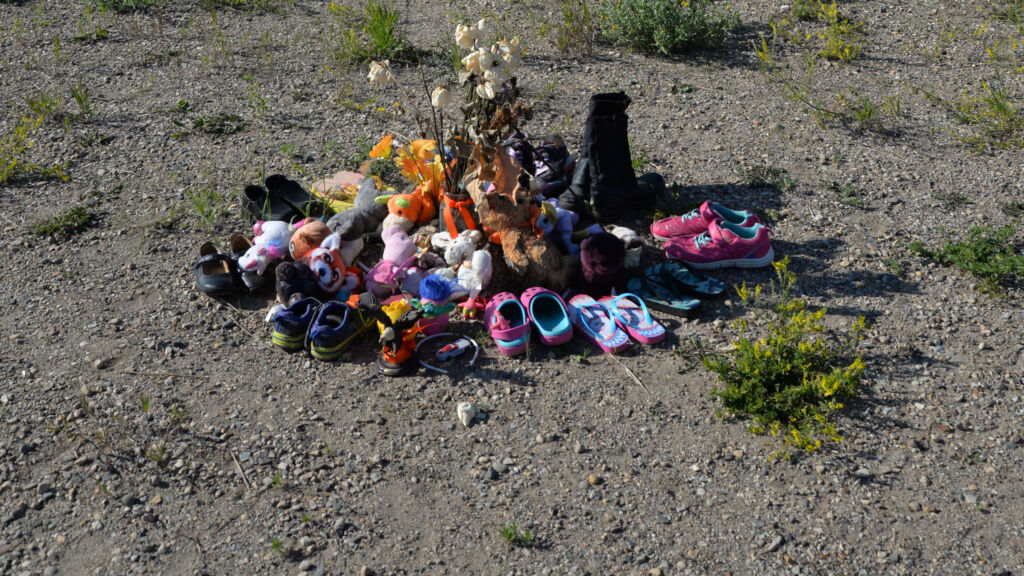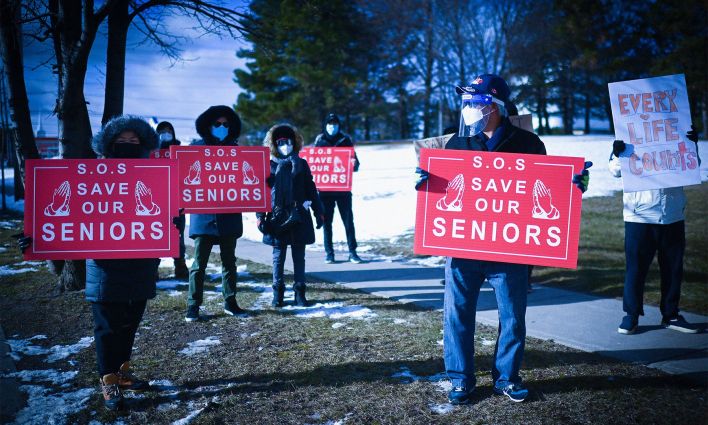Content warning: residential "schools"
In preparing the editorial for the latest issue of the Monitor, I did something all too familiar when writing about Canada’s changing media landscape—beset by new information, I started over.
When I was writing my master’s thesis on how Canadian newsrooms archive their stories, the majority of the edits were continual updates needed to accurately reflect the shrinking and conglomerating media outlets. Canada’s media landscape is far more concentrated in its ownership and lack of diversity than its American counterpart. For years the media democracy movement has been sounding the alarm about this concentration and the lack of alternative outlets. As Robert McChesney says, no matter what your first issue is, media democracy needs to be your second.
Calls for increased media literacy have grown in the wake of QAnon—a widely discredited but deeply held anti-establishment conspiracy theory that continues to spread across North America. It matters that roughly 15% of Americans believe in QAnon. And that fake news farms are using social media to spread lies to suppress racialized voter turnout, stoke tensions between Latinx and Black communities, and discredit community organizers. But while the type of media used are new, we’ve been here before. QAnon is this decade’s satanic panic. It’s supercharged and more violent, but the root issues are the same.
It should not be surprising that Canadian media struggle to cover colonizer states abroad when we struggle to find an equitable language to address the issues in our own settler colonial state.
Where we ought to focus our concern now is on addressing how Canadian mainstream media talks about settler colonial states. At the end of May The Intercept revealed that CBC News Toronto Executive Producer Laura Green told staff, “We do not use Palestine to refer to the West Bank or Gaza...as there is no modern country of Palestine.”
It should not be surprising that Canadian media struggle to cover colonizer states abroad when we struggle to find an equitable language to address the issues in our own settler colonial state. As we were preparing this issue, the Tk’emlúps te Secwépemc First Nation reported finding a mass grave at the Kamloops Indian Residential School with the remains of 215 children buried at the site. The Kamloops school was one of 139 residential schools in Canada that operated between 1831 and 1996, taking children from seven generations of Indigenous families. Mortality rates at the schools are reported to have been between 40 and 60 per cent.
This is why I threw out my original editorial.
We found that the media downplayed and marginalized the concerns of dissenting First Nations communities and consistently juxtaposed their views with pro-pipeline “experts” who asserted the economic imperative for the entire country to bring bitumen to market.
Robert Neubauer and I studied how Canadian news media covered the Northern Gateway protests in 2012. We found that the media downplayed and marginalized the concerns of dissenting First Nations communities and consistently juxtaposed their views with pro-pipeline “experts” who asserted the economic imperative for the entire country to bring bitumen to market. In the decade since, little has changed. In the last issue of the Monitor, Robert Hackett and Hanna Araza wrote about how Canada’s Postmedia outlets remain fervently pro-petrol and communities that stand in the way are quickly dismissed.
But the bias in the Canadian media goes beyond these incidents with competing interests. For example, the coverage of the attacks on Mi’kmaq lobster fishers last summer offered a “both sides” approach that suggested it was impossible to lay blame while white fishers lit Mi’kmaq boats on fire. Similarly, news stories about the protests at 1492 Land Back Lane frequently muddied the clear land claims of the Haudenosaunee. These are not the news stories of a country that (1) understands the United Nations Declaration on the Rights of Indigenous Peoples, to which Canada is a signatory, (2) has come to grips with the Truth and Reconciliation Commission’s 94 Calls to Action, (3) has reckoned with what the National Inquiry into Missing and Murdered Indigenous Women and Girls wrote in its final report: “Genocide is the sum of the social practices, assumptions, and actions detailed within this report; as many witnesses expressed, this country is at war, and Indigenous women, girls, and 2SLGBTQQIA people are under siege.”
These are the news stories of a country that accepts that 73% of First Nations’ water systems are at high or medium risk of contamination and 60 long-term drinking water advisories remain in effect, that food insecurity is 3.7, 2.7, and 2.2 times as prevalent among Inuit, First Nations living off reserve, and Métis adults, respectively, than it is among non-Indigenous adults in Canada.
The grave that the Tk’emlúps te Secwépemc First Nation discovered this year is not an isolated incident.
We need a media that can help us make sense of our history, create space for voices of those we have harmed, and begin to build a path to restorative justice for all Indigenous people.








